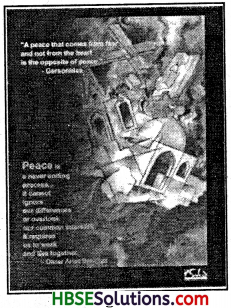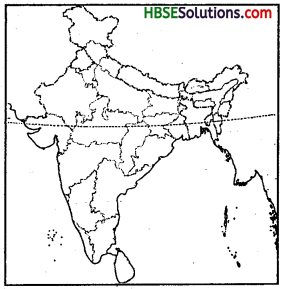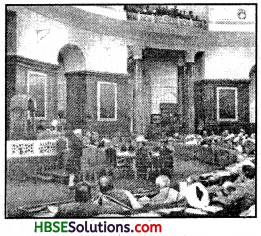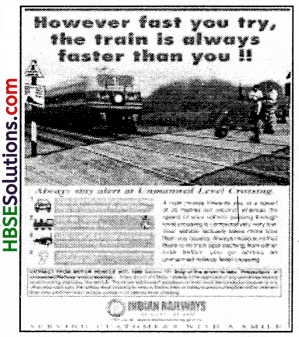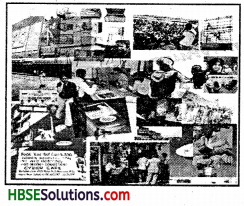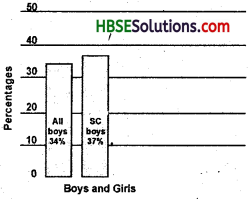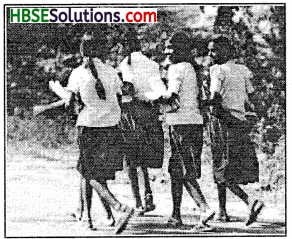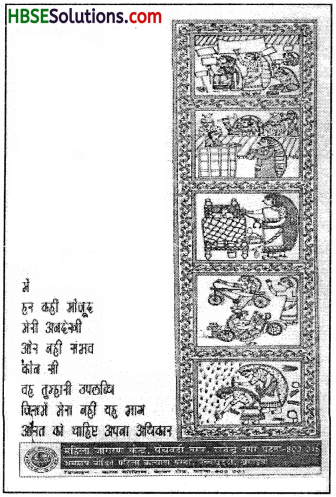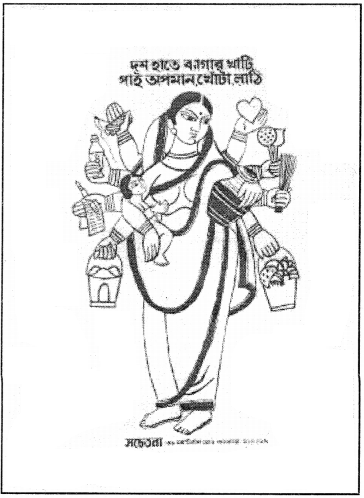HBSE 8th Class Social Science Solutions Civics Chapter 4 Understanding Laws
Haryana State Board HBSE 8th Class Social Science Solutions Civics Chapter 4 Understanding Laws Textbook Exercise Questions and Answers.
Haryana Board 8th Class Social Science Solutions Civics Chapter 4 Understanding Laws
HBSE 8th Class Civics Understanding Laws Textbook Questions and Answers
Question 1.
Write in your own words what you understand by the term the ‘rule of law’. In your response include a fictitious or real example of a violation of the rule of law.
Answer:
Rule of law:
This means that all laws apply equally to all citizens of the country and no one can be above the law. Neither a government official, neither a wealthy person nor even the President of the country is above the law.
Example: Jones, a boy of 17 years belongs to an ordinary family. He is caught driving without licence. His parents are fined and put in jail.
Utkarsh, the son of minister of 16 years of age is also caught driving but since he is the son of minister; his parents are neither fined nor is he thrown in jail. This is an example of violation of rule of law.
Question 2.
State two reasons why historians refute the claim that the British introduced the rule of law in India.
Answer:
Two reasons why historians refute the claim that the British introduced the rule of law in India are:
(i) The colonial law was arbitrary, i.e., nothing was fixed under British rule and it was instead left to one’s choice or judgement.
(ii) The Indian Nationalists played a prominent role in the development of the legal spheres in British India.
Question 3.
Re-read the story board on how a new law on domestic violence got passed. Describe in your own words the different ways in which women’s groups worked to make this happen.
Answer:
People of India came to know from their own direct experiences and through observations and through mass-media that the Indian women were not treated equally and well at their homes and work-places.
(i) Several husbands beat their wives.
(ii) Some old women were ill-treated by their sons, daughters-in-law.
(iii) Some women (unmarried/widows/ divorces or having no kids) were verbally abused or insulting remarks were passed.
(iv) Some women who gave birth to only daughters, not a son were also abused.
Indian women wanted protection against being beaten, from all sorts of physical or social violence.
Throughout the 1990s the need for a new law for giving protection to women was raised in different forums. In 1999, a group of lawyers known as lawyers collective, law students and social activists, after a nationwide consultation, took the lead in drafting the domestic violence bill. Some NGOs started the women movement. The Parliament Standing Committee in its report accepted most of the demands of women’s group. Finally a bill was introduced in the parliament in 2005. After being passed by the Parliament and getting the approval of the President, the Domestic Violence Act came into effect in 2006.
![]()
Question 4.
Write in your own words what you understand by the following sentence on page 44-45.
They also began fighting for greater equality and wanted to change the idea of law from a set of rules that they were forced to obey, to law as including ideas of justice.
Answer:
(a) The word The/ in the above passage stands for the Indian nationalists who were participating in freedom.
(b) The nationalists wanted “rule of law’ dining the colonial period.
(c) They protested against the law that any one protesting or criticising the British Government could be arrested without due trial.
(d) The legal rights of Indians were defended.
HBSE 8th Class Civics Understanding Laws Important Questions and Answers
Very Short Answer Type Questions
Question 1.
When was the Sedition Act passed?
Answer:
1870.
Question 2.
What was Hindu Succession Amendment Act, 2005?
Answer:
According to Hindu succession Amendment Act; sons, daughters and their mothers can get an equal share of family property.
Question 3.
When does parliament need to change a law?
Answer:
Parliament needs to change a law when a large number of people begin to feel that a wrong law has been passed.
Question 4.
How did people become aware of the need of the Women Protection Law?
Answer:
NGOs and other awakened people met the members of the Indian Parliament to make laws for the protection of the women. They participated in conferences and group discussion.
Question 5.
What can the people do if they find any law unfavourable for them?
Answer:
If people find any law unfavourable for them, they can approach the court to decide on the issue. The court has the power to modify or cancel laws if it finds that they don’t adhere to the constitution.
Short Answer Type Questions
Question 1.
In which ways the Indians played a major role in the evolution of the rule of law during the colonial period?
Answer:
(i) Indians adopted legal profession and they demanded respect in the colonial courts.
(ii) They began to use law to defend the legal rights of Indians.
(iii) Indian judges also began to play a greater role in making decisions.
![]()
Question 2.
How can the voice of citizen be heard by the government or parliament?
Answer:
The voice of the citizen can be heard through TV reports, newspaper editorials, radio broadcasts, local meetings, etc.
Question 3.
Why did Rosa Parks an African- American woman refuse to give up her seat on a bus to white man
Answer:
Rosa Parks refused to give up her seat on abus to white man because she was protestiig the law on segregation that divided up all public spaces, including the streets, between the Whites and the African-Americans.
Question 4.
Which event led to the start of the Civil Rights Movement in USA? Also write its one effect.
Answer:
Rosa Parks, an African-American woman refused to give up her seat on a bus to a white man marked the start of the Civil Rights Movement. This movement led to the Civil Right Act in 1964, which prohibited discrimination on the basis of race, religion or national origin in the USA.
Long Answer Type Questions
Question 1.
What is the role of parliament in making a law?
Answer:
(a) The Parliament is the law-making body at the central level. It frames new laws and amends or repeals them, if necessary, on all the 97 subjects of the Union list and all the Residuary Subjects which have not found a place in any of the lists.
(b) As far as the 47 subjects in the concurrent list are concerned, both the Parliament and the State Legislatures have got the right to make laws. But if any state law comes into conflict with the central law, the central law shall prevail.
(c) It can enact laws on the 66 subjects of the state list also if:
(i) The Rajya Sabha passes a resolution with 2/3 majority to the effect that the particular subject of the State List has come to assume national importance.
(ii) Two or more states request the Centre to pass a law for them on one or more subjects mutually agreed upon by them.
(iii) A state of national emergency is proclaimed by the President.
(iv) President takes over the administration of a state on the break-down of the constitutional machinery in that state.
Such laws will concern only the states for which they are passed.
![]()
Question 2.
How does a bill become a law?
Answer:
Acts, before they are passed by the Parliament, are called Bills. Bills are of two types-(a) Ordinary bills, and (b) Money Bills. Ordinary bills are those in which money is not involved while all such bills which are related to income and expenditure are called Money Bills. With a little difference in procedure, both the Ordinary Bills and Money Bills have to pass through various stages before they are finally passed. First is the stage of introduction.
Money Bills can be introduced only in the Lok Sabha while Ordinary Bills can be introduced in either of the two Houses of the Parliament. Then comes the Second Stage when the Bill is debated clause by clause and amendments, if any, and that too passed by a majority vote, are included in it. In the Third stage, the Bill is either passed or rejected as a whole. If passed, it is sent to the other house where the same procedure is adopted once again. If the Bill is passed by the second house also, it is sent to the President for his approval. After his assent, it becomes a law.
Picture-Based Questions
A. Look at the above picture and answer the following questions
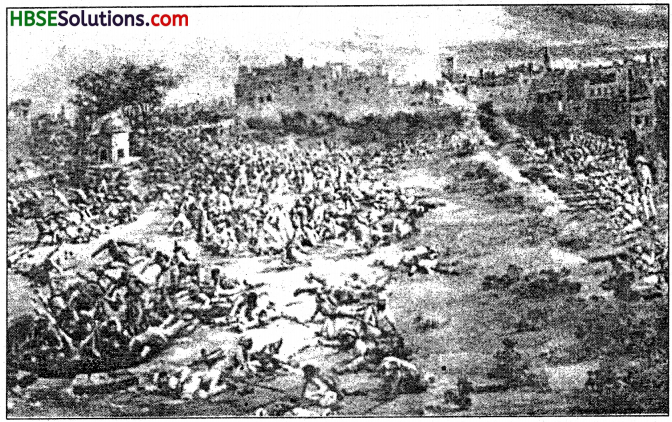
Question 1.
Which incident is depicted in the above picture?
Answer:
Jallianwala Bagh massacre.
Question 2.
When did this happen?
Answer:
13 April, 1919.
Question 3.
Why had the public gathered at Jallianwala Bagh?
Answer:
The public had gathered at Jallianwala Bagh to:
(i) protest against the arrest of Dr. Satyapal and Dr. Saifuddin Kitchlew.
(ii) protest against the Rowlatt Act.
Question 4.
Who ordered the troops to fire?
Answer:
General Dyer ordered the troops to fire.
Question 5.
What happened as a consequence?
Answer:
Several hundreds of people died in the gunfire and many more were wounded including women and children.
![]()
Understanding Laws Class 8 HBSE Notes
- Violation of Law: To act or do something against the law (a crime).
- Rule of Law: To govern or to maintain or deal the situation according to law.
- Equality of the law: To consider all tUfe persons equal before law. Not to discriminate between persons on the basis of their caste, class, gender, religion, ideology and social backgrounds.
- Arbitrary: When nothing is fixed and is instead left to one’s judgement or choice.
Sedition: This applies to anything that the Government might consider as stirring up resistance or rebellion against it. - Criticise: To find fault with or disapprove of a person or thing.
- Evolution: This refers to the process of development from a simple to a complex form and is often used to discuss the development of a species of plants or animals.
- Repressive to control severely in order to prevent free and natural development or expression.
- Civil Cases: Cases relating to property, taxes, contracts, etc.
- Criminal Cases: Cases involving a violation of penal laws such as murder, theft, assault, etc.
HBSE 8th Class Social Science Solutions Civics Chapter 4 Understanding Laws Read More »

